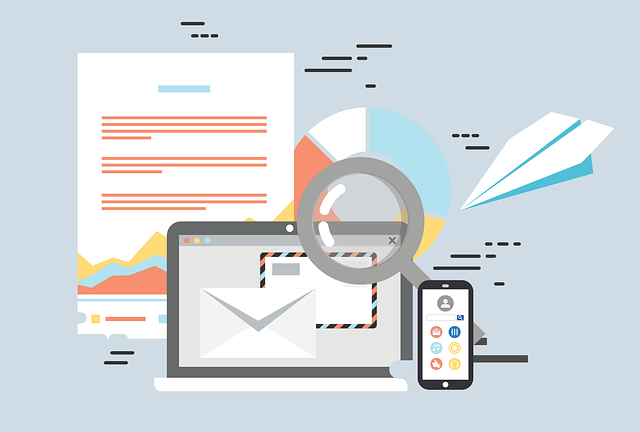Email marketing campaigns thrive on precision, but success depends on a foundational aspect: email validation vs verification. These processes ensure your messages land where they’re meant to—in the inboxes of your intended recipients. In this guide, we’ll dissect the differences, importance, and methods behind email validation and verification to help you optimize your email marketing efforts.
What is email validation?

Email validation is the first step in ensuring email addresses are properly formatted and free of basic errors. This process checks for:
- Correct syntax: Identifying formatting errors, such as missing “@” symbols or invalid domains.
- Disposable accounts: Screening out temporary addresses often used for sign-ups or spam.
- Domain existence: Verifying that the email domain exists and is configured to receive messages.
By eliminating invalid email addresses, validation ensures cleaner email lists and fewer email bounces. Proper email validation is essential to maintain sender reputation and improve email deliverability.
Benefits of email validation:
- Reduced bounce rates: Minimizes email bounces by filtering out invalid addresses.
- Improved data quality: Ensures accurate data collection for better decision-making.
- Lower costs: Prevents wasted resources on non-existent addresses.
What is email verification?

Email verification digs deeper to confirm that an email address exists and can receive emails. Unlike validation, verification involves:
- SMTP handshake: Communicating with the recipient’s mail server to check if the address is active (e.g., with the correct AT&T email settings).
- DNS lookup: Verifying the domain’s DNS records to confirm the domain exists.
- MX records: Ensuring the domain has mail servers set up for receiving emails.
Why email verification matters:
- Enhanced deliverability: Verified addresses ensure your emails reach real users.
- Fewer spam complaints: By verifying email addresses, you’re less likely to hit spam traps.
- Better ROI: Targeting verified addresses maximizes the effectiveness of your email marketing campaigns.
Key differences between email validation and verification
| Aspect | Email Validation | Email Verification |
|---|---|---|
| Purpose | Ensures proper formatting and basic validity | Confirms the email address can receive emails |
| Checks | Syntax, domain existence, disposable accounts | SMTP handshake, MX records, DNS lookup |
| Tools used | Automated tools like email validation tools | Email verification tools |
| Outcome | Clean, properly formatted list | Verified, deliverable email addresses |
Understanding these key differences ensures that both validation and verification are used effectively to maintain a high-performing email list.
Why email marketers need both email validation and verification
Combining both processes creates a foolproof system for maintaining email list hygiene. While email validation removes obvious errors and invalid email addresses, verification ensures that the remaining addresses are ready to receive messages.
The impact on email campaigns:
- Boost sender reputation: A clean list reduces the risk of spam complaints and keeps your email service provider happy.
- Increase email deliverability: Verified addresses ensure your campaigns reach the inbox, not the spam folder.
- Improve engagement: Fewer bounces and invalid addresses lead to higher open rates and conversions.
The email validation process: A step-by-step guide

- Basic validation: Remove addresses with formatting errors, such as missing domains or invalid characters.
- Domain verification: Check if the email domain exists and has active DNS records.
- Identify disposable email addresses: Filter out temporary or one-time use emails often tied to spam activity.
- Syntax checks: Ensure proper formatting for all email addresses.
Using automated tools, this process can be completed in real-time, such as during sign-ups on landing pages.
The email verification process: How it works to check for invalid email addresses
- DNS lookup: Verify the domain’s MX records to confirm it is set up to receive messages.
- SMTP handshake: Communicate with the recipient’s server to confirm the address exists.
- Identify spam traps: Avoid addresses that could harm your sender reputation.
Pro tip: Use third-party services for scalable verification. These tools integrate seamlessly with your email marketing software to validate and verify email addresses efficiently.
Best practices for email validation and verification

- Validate emails at sign-up: Use real-time validation on landing pages to catch errors early.
- Verify email lists regularly: Periodic checks ensure your database remains up-to-date.
- Leverage double opt-in: Send a verification email to confirm that new subscribers are legitimate.
- Monitor bounce rates: High bounce rates may indicate a need for stricter validation and verification methods.
- Choose reliable tools: Invest in email validation tools and email verification tools that offer accuracy and scalability.
Tools for email validation and email verification tools
Here are some features to look for in email validation and verification tools:
- Real-time validation: Ensures accurate email capture during sign-ups.
- Comprehensive verification: Includes checks for MX records, SMTP handshakes, and DNS lookups.
- Automation: Use automated tools to streamline the validation and verification process.
- Scalability: Handle large email lists without compromising accuracy.
Dr. Emily Carter, PhD in Data Quality Management
Renowned Email Marketing Consultant and Author of Email Excellence: The Ultimate Guide
*”When you validate email addresses, you’re not just ensuring they follow proper email syntax\u2014you’re laying the groundwork for a robust marketing strategy. Verification and validation work hand-in-hand to deliver valid addresses to your campaigns, ensuring your emails are received by actual email users.
Utilizing both email verification and validation methods creates a powerful in-depth process that prevents common issues like bounce rates or spam traps.
Many businesses underestimate the importance of testing with free trials offered by email validation providers. These tools streamline everything from analyzing incoming emails to detecting improperly formatted addresses. The key is to send emails only to lists that have undergone thorough checks, ensuring your campaigns maintain their integrity and reach the right audience effectively.”*
Thought provoking questions

To encourage deeper reflection on email validation vs verification, consider these questions:
- How can your business ensure both the email validation process and the email verification process are seamlessly integrated into your marketing tools?
- What strategies can you implement to validate email addresses in real-time on landing pages while maintaining a smooth user experience?
- Are your current email verification tools capable of performing DNS lookups, SMTP handshakes, and domain verification efficiently?
- How do validation and verification collectively impact your sender reputation and the success of your email campaigns?
- What role do automated tools play in reducing bounce rates, catching improperly formatted addresses, and identifying disposable accounts?
- How often should businesses verify their email lists to ensure they only send emails to verified addresses?
- Could using a double opt-in strategy alongside proper validation and verification processes significantly improve email deliverability and reduce entries into the spam folder?
Conclusion: Why email validation vs verification matters
Understanding the email validation vs verification debate is crucial for maintaining clean email lists, reducing bounce rates, and optimizing your email marketing efforts. By validating and verifying email addresses, email marketers can ensure their campaigns reach the intended recipients and drive better engagement.
Make validation and verification a regular part of your email strategy to enhance sender reputation, improve data quality, and achieve flawless email deliverability.




